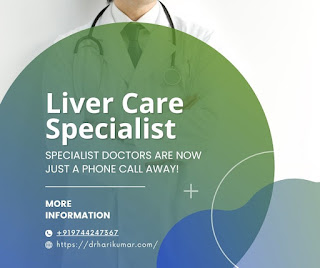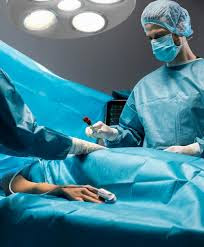Understanding Fatty Liver Disease: Symptoms, Causes, and Treatment
Fatty liver disease has become one of the most common health concerns worldwide, affecting millions of people across all age groups. The condition often develops silently, which means many individuals do not realize they have it until complications appear. Understanding what fatty liver disease is, how it develops, its symptoms, and the available treatment options can help individuals take early action and avoid long-term liver damage.
This detailed guide covers everything you need to know about fatty liver disease, including causes, stages, symptoms, diagnostic methods, treatment options, lifestyle changes, risk factors, prevention strategies, and when to see a specialist.
What Is Fatty Liver Disease?
Fatty liver disease occurs when excess fat accumulates inside liver cells. Normally, a small amount of fat is present in the liver, but when this fat exceeds 5%–10% of the liver’s weight, it is considered abnormal and unhealthy.
There are two main types:
1. Non-Alcoholic Fatty Liver Disease (NAFLD)
-
Occurs in individuals who consume little to no alcohol.
-
Often linked to obesity, diabetes, high cholesterol, or metabolic syndrome.
-
Most common form worldwide.
2. Alcohol-Related Fatty Liver Disease (AFLD)
-
Caused by excessive alcohol intake.
-
If untreated, can progress to alcoholic hepatitis and cirrhosis.
Both types can lead to inflammation, scarring, and eventually severe liver damage if not managed early.
The Stages of Fatty Liver Disease
Fatty liver disease progresses through four stages, each with increasing severity:
Stage 1: Simple Fatty Liver (Steatosis)
Fat builds up in the liver, but there is no inflammation or damage yet.
Most people have no symptoms and may not even know they have the condition.
Stage 2: Steatohepatitis (NASH or ASH)
Fat accumulation leads to inflammation.
In NAFLD, this is called NASH (Non-Alcoholic Steatohepatitis).
In alcoholic liver disease, it is called ASH (Alcoholic Steatohepatitis).
This stage increases the risk of scarring.
Stage 3: Fibrosis
Persistent inflammation begins to cause scar tissue formation.
The liver can still function normally, but damage is happening internally.
Stage 4: Cirrhosis
Severe scarring replaces healthy liver tissue.
Liver function is significantly reduced.
This stage can lead to liver failure and may require a liver transplant.
Common Symptoms of Fatty Liver Disease
Fatty liver disease often causes no symptoms in early stages, which is why regular checkups are crucial.
When symptoms do appear, they may include:
-
Constant fatigue or low energy
-
Pain or discomfort in the upper right side of the abdomen
-
Unexplained weight loss
-
Weakness
-
Loss of appetite
-
Nausea
In advanced stages (fibrosis or cirrhosis), symptoms can include:
-
Yellowing of the skin or eyes (jaundice)
-
Swelling in legs or abdomen
-
Confusion or difficulty concentrating
-
Easy bruising or bleeding
-
Severe tiredness
If any of these advanced symptoms occur, immediate medical attention is necessary.
What Causes Fatty Liver Disease?
Fatty liver develops due to a combination of lifestyle, metabolic, and genetic factors.
1. Obesity
One of the strongest risk factors; excess body fat increases fat storage in liver cells.
2. Insulin Resistance and Type 2 Diabetes
High insulin levels lead to fat buildup in the liver.
3. High Cholesterol or Triglycerides
Unbalanced lipid levels contribute significantly to fatty liver.
4. Unhealthy Diet
Frequent consumption of:
-
Sugary drinks
-
Junk food
-
Processed carbohydrates
-
Saturated fats
increases fat accumulation.
5. Sedentary Lifestyle
Lack of physical activity reduces metabolism and promotes fat storage.
6. Excessive Alcohol Consumption
Alcohol is directly toxic to liver cells and promotes inflammation.
7. Genetic Predisposition
Family history may increase the risk.
8. Certain Medications
Some drugs, such as steroids and certain antivirals, may cause fatty liver as a side effect.
Risk Factors You Should Not Ignore
Individuals with the following conditions are at higher risk:
-
Polycystic Ovary Syndrome (PCOS)
-
Sleep apnea
-
Hypothyroidism
-
Metabolic syndrome
-
Obesity (especially around the abdomen)
-
Pre-diabetes
-
High blood pressure
Understanding these risks gives a clear picture of preventive strategies.
How Fatty Liver Disease Is Diagnosed
Doctors use a combination of tests and imaging techniques to confirm fatty liver disease.
1. Blood Tests
-
Liver function tests (LFT)
-
Tests for ALT, AST, GGT
Elevated enzymes may indicate inflammation.
2. Ultrasound
A non-invasive method to detect fat accumulation.
3. FibroScan (Liver Elastography)
Measures stiffness to detect fibrosis or cirrhosis.
4. MRI or CT Scan
Provides detailed imaging to evaluate liver fat percentage.
5. Liver Biopsy
A very accurate test to assess the exact stage of damage.
Usually recommended only in complex or high-risk cases.
Complications of Untreated Fatty Liver Disease
If not treated on time, fatty liver can lead to serious complications:
-
Chronic inflammation
-
Fibrosis
-
Cirrhosis
-
Liver failure
-
Portal hypertension
-
Hepatocellular carcinoma (liver cancer)
Early diagnosis and lifestyle changes significantly reduce the risk of these complications.
Treatment for Fatty Liver Disease
There is no single “magic pill,” but fatty liver disease is highly reversible in early stages through lifestyle changes and proper medical guidance.
1. Weight Management
Losing 7%–10% of body weight can reduce liver fat significantly.
Slow, consistent weight loss is recommended.
2. Healthy Diet
A liver-friendly diet includes:
-
Fruits & vegetables
-
Whole grains
-
Lean proteins
-
Healthy fats (nuts, seeds, olive oil)
-
Reduced sugar and processed foods
-
Limited red meat
Mediterranean-style diets are highly beneficial.
3. Regular Exercise
At least 150 minutes of moderate activity per week, such as:
-
Walking
-
Cycling
-
Swimming
Exercise improves insulin sensitivity and reduces inflammation.
4. Diabetes Control
Managing blood sugar levels prevents further liver damage.
5. Cholesterol Management
Doctors may advise medication to control lipid levels if required.
6. Avoiding Alcohol
Essential in both NAFLD and AFLD.
Alcohol worsens inflammation and speeds up liver damage.
7. Medications (Only if Prescribed)
Certain medications may help depending on individual medical conditions:
-
Vitamin E (for specific cases of NASH)
-
Insulin sensitizers
-
Anti-inflammatory drugs
Self-medication should be avoided.
Effective Lifestyle Habits That Support Liver Health
-
Drink plenty of water
-
Include high-fiber foods
-
Reduce consumption of sugar, salt, and unhealthy fats
-
Sleep at least 7–8 hours daily
-
Manage stress through yoga or meditation
-
Limit processed and packaged foods
-
Avoid smoking
Small, consistent changes have long-term benefits.
Can Fatty Liver Disease Be Reversed?
Yes — especially in early stages (simple fatty liver and early NASH).
Reversal becomes difficult once fibrosis starts, and cirrhosis is irreversible.
Prevention Strategies
1. Maintain a Healthy Weight
Avoid sudden weight gain or rapid crash diets.
2. Balanced Nutrition
Focus on whole foods and limit artificial sugars.
3. Regular Physical Activity
Daily movement helps keep the liver healthy.
4. Regular Medical Checkups
Especially for people with diabetes, cholesterol issues, or metabolic syndrome.
When to See a Specialist
Consult a gastroenterologist or hepatologist if you experience:
-
Persistent abdominal discomfort
-
Unexplained fatigue
-
Abnormal liver test results
-
Signs of jaundice
-
Sudden weight loss
-
A family history of liver disease
Early evaluation helps prevent complications.
Conclusion
Fatty liver disease is a growing health concern, but it is also one of the most manageable liver conditions when detected early. Understanding the symptoms, causes, and treatment options empowers individuals to take control of their health. With proper lifestyle changes, medical guidance, and regular follow-ups, most people can prevent fatty liver from progressing and even reverse it in the early stages.




Comments
Post a Comment